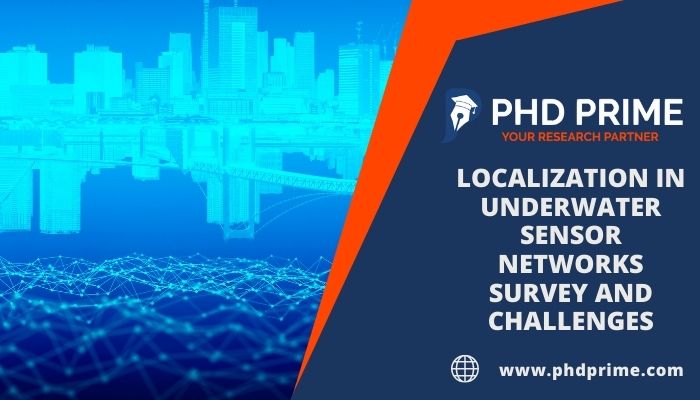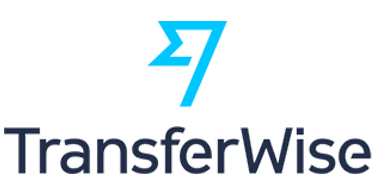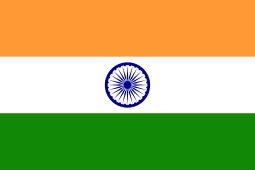Underwater Wireless Sensor Networks (UWSNs) is a web of sensors that are distributed randomly under the water to monitor the environments for knowing water-related assets. Specifically, it collects the information through underwater sensors and performs uplink transmission for forwarding the data to the access point (terrestrial). Then, the same process is performed in reverse for downlink transmission. In this way, the data transmission/communication is established in UWSNs. This page provides you details on Current Research Trends, and Ideas related to Localization in Underwater Sensor Networks Survey and Challenges!!!
Both our research team and development have in-depth long-lasting experience in dealing with UWSNs. So, we have a strong technical background in sculpting your research works into fine sculpture as a masterpiece. Based on this experience, here we have shared a few up-to-data research perspectives of the UWSN research field. Beyond these ideas, we are ready to give add-on information on other developments and upcoming developments.

Current Trends in Underwater Sensor Networks
- Modeling of Localization System in UWSN
- Real-time UWSN System Development and Assessment
- New Design / Architecture for Underwater Sensor System
- Designing and Virtualization of Underwater Sensor System
- Efficient Utilization of Network Protocols in UWSN
- Underwater Sensors based Data Acquisition, Analysis, and Storage
- Cooperative Data Transmission in Underwater Wireless Sensor Network
- Efficient Design of Routing Protocol for Underwater Communication
- Underwater Moving Object / Source Tracking in Sensor Network
In addition to the above specified current trends in UWSNs, now we are going to see about the role of localization in UWSN research.
Underwater Wireless Sensor Networks (UWSNs) is a widespread research platform to develop unlimited applications and services. The special element in UWSN is that it enables labeling the sensed data with its location info. It is not mandatory to include location information in sensed data but recent applications prefer to use location info. Since it has a strategic player role in a sensor network. For instance: if the sensed data is enclosed with geo-location, then it is more useful for future study in sensing applications. For more clarity, here we have showcased the importance of node localizations by their purposes.
Need of Node Localization in UWSNs
- To correlate the data for target tracking
- To increase the efficiency of routing, MAC, and other network protocols
- To replace the ID in the communication protocol by geo-location for routing
- To maximize the network lifespan and recognize WSN utility based on coverage
- To achieve scalability in the large-scale network since anchor nodes are not scalable
- To detect the source node of the incoming data where the sensed data comprises information of location, measurement, and time
Real-Time Examples for localization in UWSNs
For your better understanding, here we are going to explain the localization significance with real-world application. Let’s see two real scenarios as examples,
- Pollution Monitoring System – If you have the report of pollutants with sensor location, then you can estimate the coverage of pollutants extendibility
- Tsunami Alerting Systems – If you have the report of seismic activities with sensor location, then you can predict the impact time and wave force in coastline areas.
Therefore, it is highly required to design an efficient localization algorithm. To achieve the expected results, perform a deep review of all recent techniques and assess them through various parameters to set the key features of localization algorithms.
Fundamentals of Localization in Underwater Sensor Networks
In general, if you refer to the literature of Localization in Underwater Sensor Networks Survey and Challenges, then you can find three major components of localization schemes are anchor nodes with known locations, nodes with unknown locations, and distance among anchor nodes and unknown nodes. Here, the anchor’s locations can be identified in 2 ways one is these nodes have pre-configured fixed locations and the other is GPS-assisted locations. Then, the locations of unknown nodes are detected either through the measurements of angle or distance among known and unknown nodes or a combo of both measurements. Below, we have given the three stages of localization scheme functionalities for your reference.
How does localization work for UWSNs?
- Phase 1
- Transmit the start commands through deployed Autonomous Underwater Vehicle (AUV)
- Determine the environmental metrics
- Phase 2
- Calculate the transmission loss by AUV while receiving the transmissions from multiple anchored nodes
- Phase 3
- AUV determine the length of every anchored node by calculated transmission loss and also it locates every node by efficient centroid functions
So far, we have discussed the need for localization, fundamentals, real-time applications, and functionalities. Hope you understood what we are trying to convey. Next, we can see the recent research challenges related to the localization systems of UWSNs. Generally, we collect recent research ideas based on the in-depth study of Localization in Underwater Sensor Networks Survey and Challenges. From that angle, we short-listed a few major concerns of localization in UWSN for your reference.
Open Issues and Challenges of Localization in UWSNs
- Time Synchronization
- For range-oriented localization, the distance of node is computed by the round trip time taken for interchanging the messages
- In the silent localization positioning approach, nodes are assumed to be time-synchronized to reduce the cost of communication
- So, it requires actual time synchronization among underwater nodes in real environs but it is difficult to attain due to harsh environmental factors
- Prediction of Anchor Node
- The anchor nodes are otherwise called the reference node which helps to find other nodes locations from their known location
- If the number of anchor nodes increases then the accuracy of the localization schemes can also be improved but the cost of communication is quite expensive
- So, it is required to stabilize the trade-off between the number of anchor nodes and localization coverage
- Technique for Range Calculation
- As mentioned earlier, range-oriented localization enables the sensor node to identify the location based on the reference node
- Other localization schemes are Time of Arrival (ToA), Difference of Arrival (TDoA), Angle-of-Arrival (AoA), and Time received Signal Strength indicator (RSSI)
- Localization Prediction
- It is one of the best techniques for achieving accurate localization
- Since it works depends on the node mobility prediction under the water
- However, it estimates the location accurately, it is a challenging task to perform due to the lack of efficient mobility models
Localization Protocols in Underwater Sensor Networks
On understanding the importance of node localization in UWS systems, numerous protocols/algorithms are introduced. However, it has large collections but still, people are looking for more effective localization techniques. The protocols are classified into the following categories,
- Transmission Medium (optical, acoustic, radio, and electromagnetic)
- Nodes Mobility (dynamic and fixed)
- Primary Strategies (range independent localization and range dependent localization)
- Computational Model (decentralized and centralized)
Our resource team is good not only at recognizing the research challenges and ideas about localization but also good at solving those challenging problems. At large, the UWSN systems are classified into the central and distributed base on their deployment of sensors. For your ease, here we have given you the list of localization algorithms/techniques based on the classified environs along with node type.
Localization Algorithms for UWSNs
- Distributed
- Hybrid Localization
- 3D Underwater Localization (3DUL)
- With Directional Beacon (LDB)
- Using Directional Beacon (UDB)
- Mobile Localization
- Dive and Rise Localization (DNR)
- AUV-Aided Localization (AAL)
- Detachable Elevator Transceiver Localization (DETL)
- Multi-Stage Localization (MSL)
- Stationary Localization
- Large-Scale Hierarchical Localization (LSHL)
- Distance Vector Hop Count (DV-Hop)
- Wide Coverage Positioning (WPS)
- Underwater Positioning Scheme (UPS)
- New Localization Algorithm (NLA)
- Hybrid Localization
- Centralized
- Hybrid Localization
- Silent Localization using Megnatometer (SLM)
- 3D Multi-power Area Localization Scheme (3D-MALS)
- Mobile Localization
- Collaborative Localization Scheme (CLS)
- Two-Stage Localization (TSL)
- Motion-Aware Self-Localization (MALS)
- Stationary Localization
- Hyperbola-based Localization Scheme (HLS)
- Area Localization Scheme (ALS)
- Hybrid Localization
Performance Metrics of Localization in UWSNs
In the above section, we have discussed the localization algorithms. Now, we can see the intention of localization (i.e., performance objectives) that need to be achieved and concerned in the designing phase of algorithms.
- Overhead of Communication
- It is a significant issue to be concentrated first among all others since it causes high energy utilization, high convergence duration, high disputes, high retransmission, etc.
- Convergence Duration
- Here, the underwater sensor nodes are constantly moving with water current on top of low propagation speed in acoustic communication
- Consequently, it maximizes the localization’s convergence duration
- Accurate Localization
- It is the primary metric for localization protocol which differs based on the application requirements
- For example, disaster preventive measures, military defense systems, target tracking, mine extraction, pollution monitoring, etc.
- All these applications require more precise results on localization for efficient system performance
- Energy Utilization
- It is one of the major problems in UWSN because it requires more for underwater acoustic channel and also it is difficult to recharge/replace
- Coverage of Localization
- It computes the approximate number of unknown nodes with their positions
- As mentioned earlier, it is more useful to have sensed data with geo-location
What are the best simulation tools for localization in UWSNs?
Generally, UWSNs are supported in many network-oriented simulation tools which are classified as commercial and non-commercial. Our developers are accurate in choosing the best tool based for underwater sensor networks projects. For localization systems, the following implementation tools and technologies are more suitable and give the best results.
- MDS (Apt for 3D UWSN localization)
- MATLAB (Include networking toolboxes)
- OMNeT++ with Castalia (Apt for localization in UWSN)
Other Tools:
- Commercial – NS-3 and NS-2
- Non-Commercial – OPNET
Additionally, we have also given the primary metrics used for evaluating the performance of UWSNs. These metrics reveal not only the performance of UWSNs but also the behavior of the network components. More than these metrics, we suggest other metrics depending on your project’s unique needs.
Performance Analysis for UWSNs
- Beacon Overhead
- Normalized Execution Duration
- Average Localization Error
Last but not least, here we have itemized the current research directions of the UWSNs which utilize acoustic communication. Since many of the UWSN research areas majorly depends on acoustic communication. So, it will be more useful for active and upcoming scholars.
Research Ideas on Underwater Acoustic Communications
- Long-term Network Sleeping in Acoustic Communication
- Advance MAC Protocol Design and Evaluation
- Improved Time synchronization in Data Transmission
- Efficient Packet Scheduling at Application-level
- Secure Localization for Extremely Delay Acoustic Networks
Furthermore, if you need add-on information about Localization in Underwater Sensor Networks Survey and Challenges, then contact our team. We are here to support you till the end of your research journey through appropriate research guidance.





















